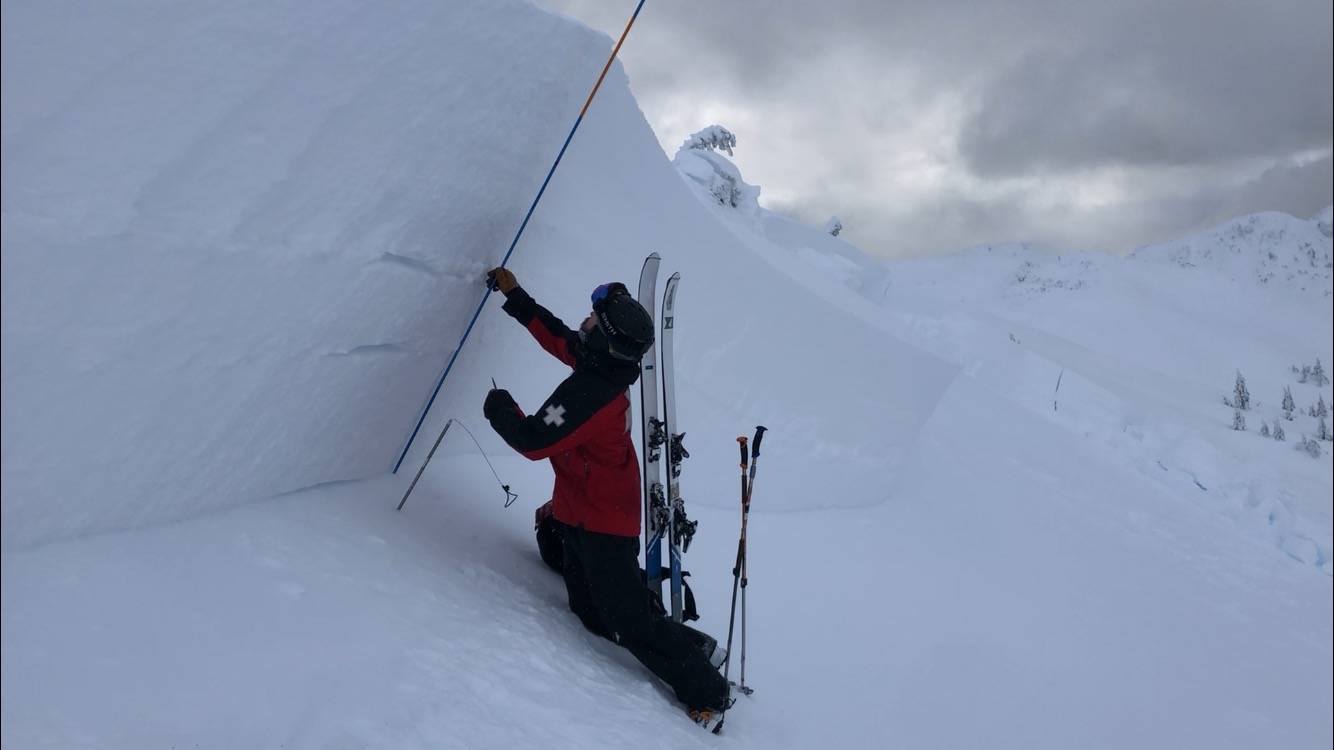This article has been updated to include new information.
A Friday winter storm added to already-present instabilities in the snowpack means the Juneau area is at high risk for avalanches, with the possibility of evacuations.
“The Urban Avalanche Advisory is currently at Considerable. If the winter storm materializes as expected, it could be raised to Extreme,” City and Borough of Juneau said in a news release. “With heavy snow turning to rain in the forecast this weekend, on top of already deep snow instabilities, avalanche danger in the Juneau area will be rapidly climbing over the next 48-72 hours with potential for historic avalanches.”
The Behrends Avenue, Flume Trail and Mount Juneau are under particularly high threat, said CBJ emergency program manager Tom Mattice in a phone interview. Residents are advised to keep an eye on the avalanche advisory status online at https://juneau.org/emergency/current-advisory. Evacuation recommendations may go out if conditions worsen, the news release said.
“The Swiss model shows, if it breaks 6 feet deep across Mount Juneau, it’s going to hit Egan Drive at 14 feet deep, going 57 mph, across a quarter mile,” Mattice said. “Hopefully it will not be nearly that big, but there’s too many things headed in the wrong directions.”
Mattice said that avalanche forecasting is an imperfect science, but that the perfect storm of risk factors coming together, including the storm and persistent slab instabilities, had everyone dealing with avalanche threats on high alert.
[House member tests positive for COVID-19]
The conditions are above and beyond the regular threat in Juneau, said a member of the Coastal Alaska Avalanche Center.
“We saw this particularly disturbing weekend of weather coming up and we wanted to get ahead of it and let people know not to expose themselves to avalanche terrain,” said Kanaan Bausler in a phone interview. “This is a unique situation that is very atypical of our climate and we shouldn’t treat it like a normal avalanche threat.”
A rare confluence of circumstances is creating the risk, Bausler said.
“The weak layer got particularly weak when we had that stretch of really cold temperatures,” Bausler said. “Now that we have a warm storm coming in, it’s looking pretty sketchy.”
The threat is compounded by icy layers, February’s hard freeze, and the expected heavy winter storm Friday night, Bausler said.
“You can have a really deep slab on top of that. We’ve had similar setups in the past, but nothing that looks this persistent,” Bausler said. “It might take 5-10 feet of snow on top of this weak layer before it lets go. It could persist through the spring. It’s something we’re gonna have to keep an eye on.”
The Eaglecrest Ski Patrol used explosives to trigger an avalanche in the West Bowl on Sunday, Bausler said. There have also been avalanches around the area, particularly in Douglas, including several caused by snowmobilers, Bausler said. Risk in other areas has also been reduced through active mitigation efforts.
Department of Transportation and Public Facilities said Friday afternoon the avalanche risk for the Thane Road will increase rapidly as rain and snow accumulate. The department, in a news release, warned Thane residents to prepare for extended road closures.
Bausler also said Alaska Electric Light and Power has been triggering earthquakes with the underslung DaisyBell device near the Snettisham Hydroelectric Facility and along the powerlines to keep them clear.
For those recreating outdoors, Bausler advised caution and prudence this weekend.
“The main thing right now is to avoid avalanche terrain. There’s always a lot of people in town that get out in the mountains no matter what the conditions are. Be really conservative with your terrain choice. Stick to somewhere low angle and places that are heavily forested,” Bausler said. “If you’re under a slope that’s between 25 and 50 degrees, that has a pretty good potential to avalanche. Keep the slope angles low and be mindful of what’s above and below you.”
• Contact reporter Michael S. Lockett at (757) 621-1197 or mlockett@juneauempire.com.

